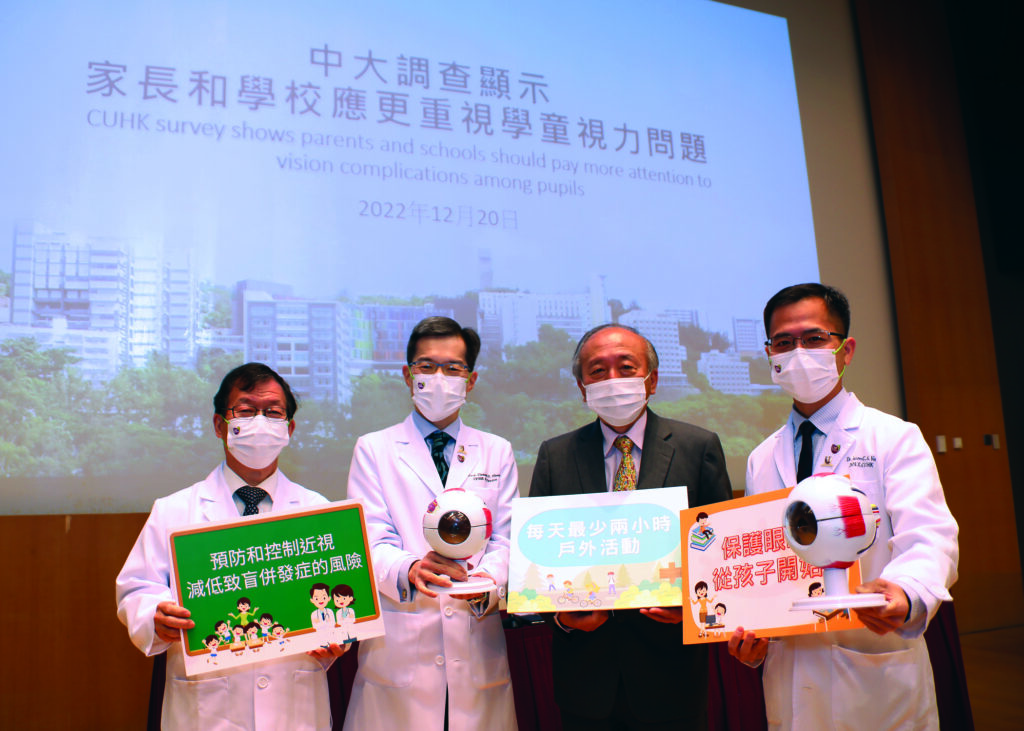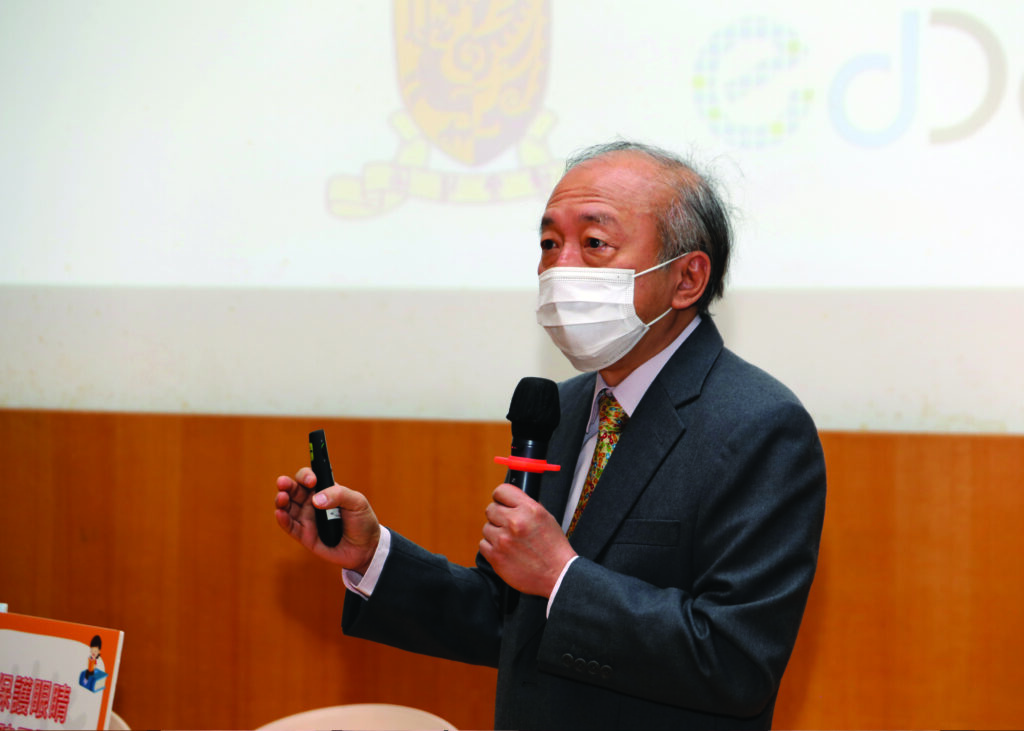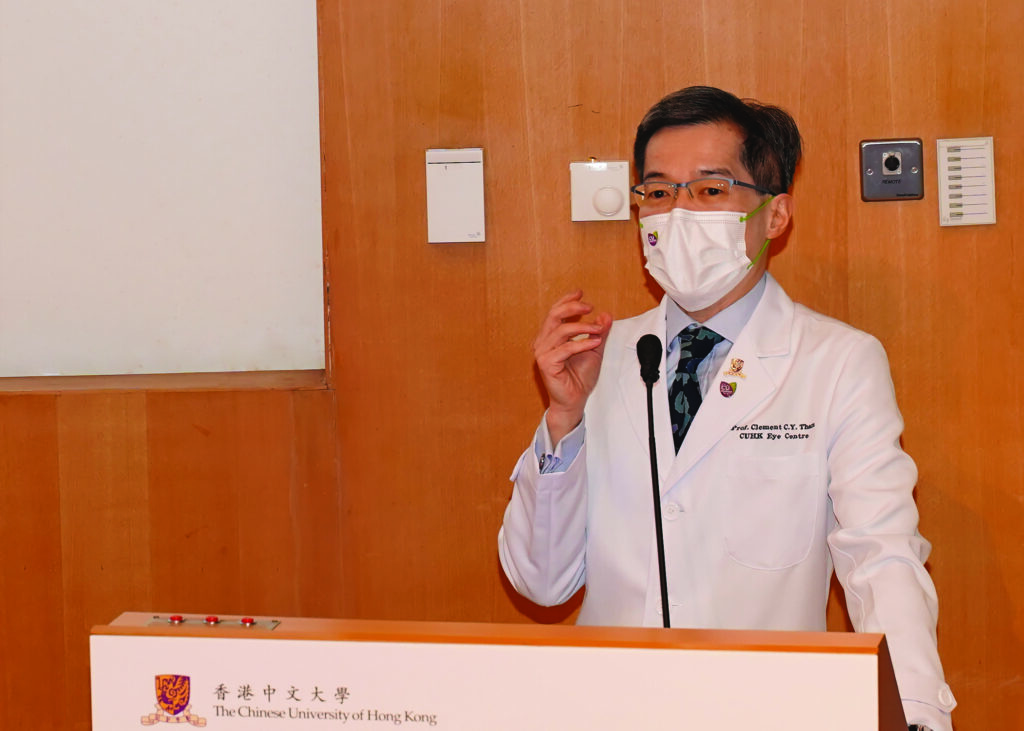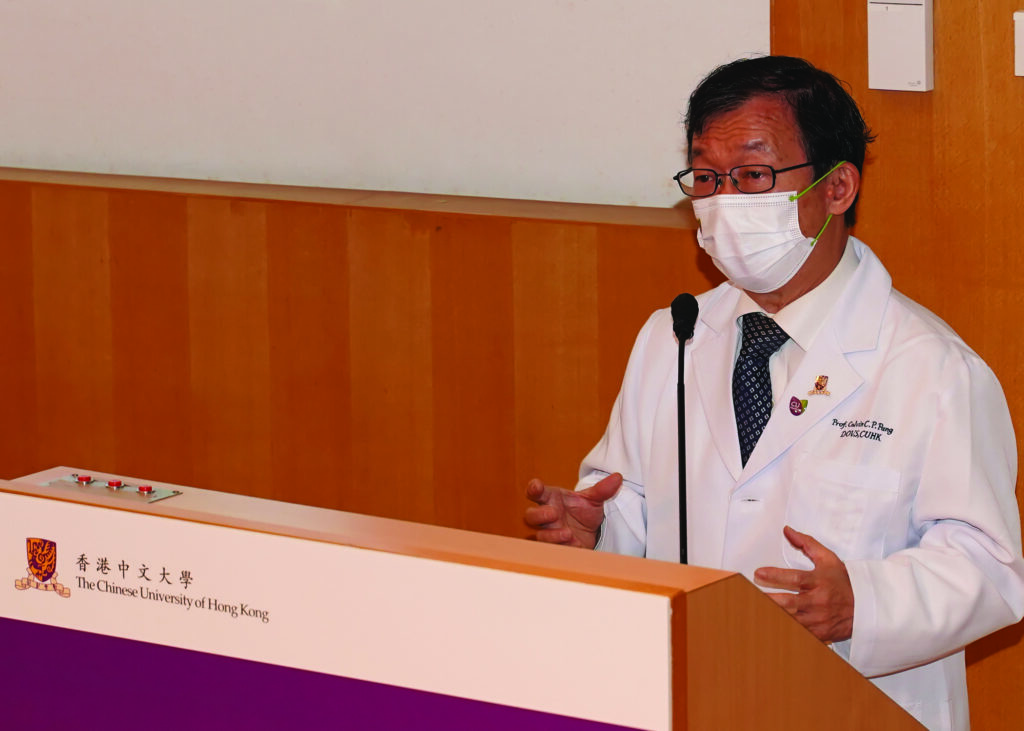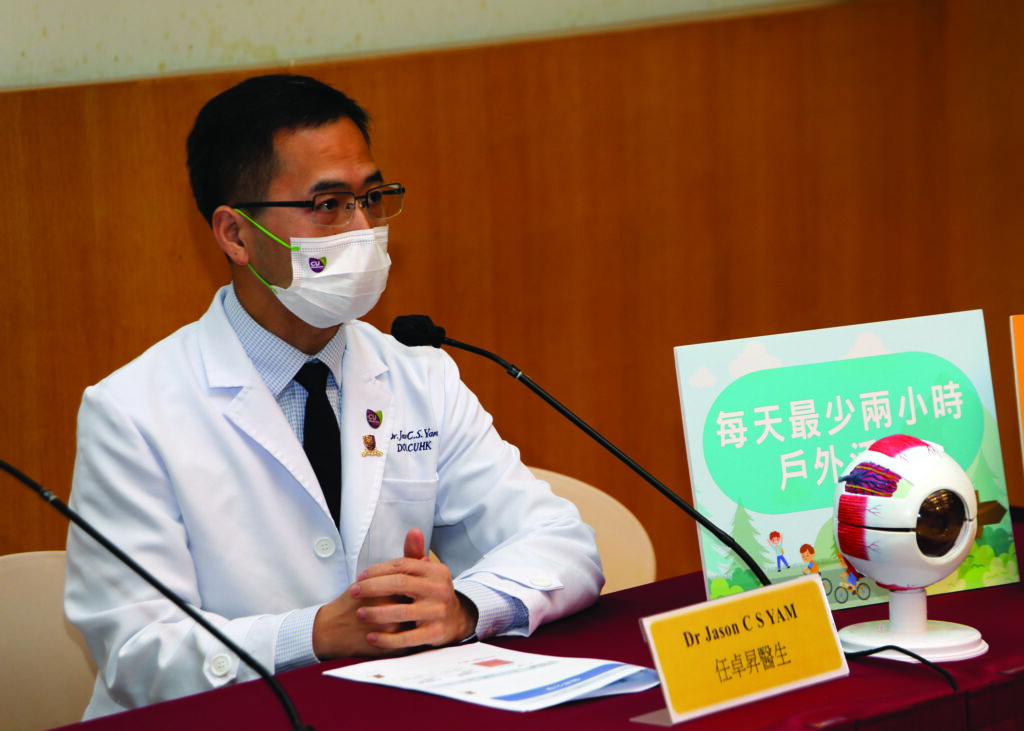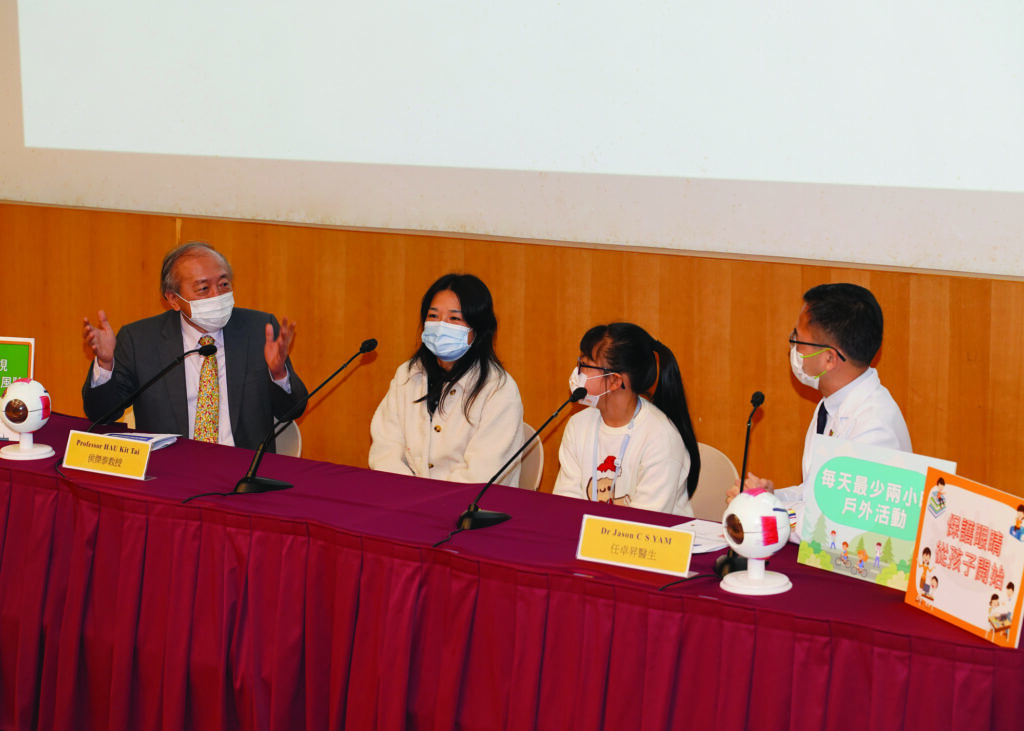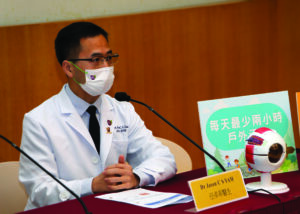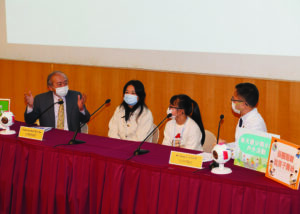CUHK
News Centre
CUHK survey shows parents and schools should pay more attention to vision complications among pupils
Hong Kong is among the cities with the highest prevalence of myopia in the world. To better understand the visual health of schoolchildren in Hong Kong, The Chinese University of Hong Kong (CUHK) EdDataX Research Centre conducted a survey of pupils’ eyesight during the COVID-19 pandemic. The survey examined various vision complications (myopia, hyperopia, astigmatism, strabismus and amblyopia) among pupils of different grades, as well as parents and teachers’ awareness of pupils’ visual health.
Many Hong Kong pupils are affected by myopia, increasing from 28% in Primary 3 to 66% in Secondary 3
The questionnaire survey was conducted in June 2021 in 108 primary schools (P.) and 103 secondary schools (S.), and involved 6,498 P.3 (Grade 3) pupils, 4,249 P.6 (Grade 6) pupils, 6,228 S.3 (Grade 9) pupils, and their parents, as well as 736, 547 and 730 teachers who mainly taught P.3, P.6 and S.3 respectively.
The results show that many pupils are affected by myopia: 28% in P.3, 50% in P.6 and 66% in S.3. Astigmatism was found in 47% of the S.3 pupils. A sizeable number of pupils who do not wear glasses reported vision complications, such as astigmatism, myopia and hyperopia. Parents’ myopia, hyperopia, astigmatism, strabismus and amblyopia are strongly linked to similar vision complications in their children. Over half of the parents reported that their children’s visual health deteriorated during the pandemic but few of them took any remedial action. The survey report is available on the website of CUHK EdDataX Research Centre: bit.ly/EdDataXNews.
Parents and teachers had not given extra advice to pupils on eye protection
Professor Hau Kit-tai, Professor at CUHK’s Department of Educational Psychology said, “As reported by pupils, neither teachers nor parents gave them additional advice about eye protection during the pandemic, but parents gave more advice than teachers. Parents of higher socioeconomic status and with better education did not give more guidance on eye care. As reported by schools, teachers and principals claimed that they had given extra advice on eye care during the pandemic (June 2021). However, this was not confirmed in pupils’ responses. The education sector should join hands with medical professionals to organise large-scale public education campaigns that raise awareness of eye health among pupils.”
Professor Clement C Y Tham, Chairman and S H Ho Professor of Ophthalmology and Visual Sciences from the Department of Ophthalmology and Visual Sciences, Faculty of Medicine of CUHK (CU Medicine), remarked, “Hong Kong is a highly populous city, where outdoor spaces are limited. During the pandemic, physical classes were replaced by online classes and social activities were restricted. Pupils eventually spent less time outdoors and more time on near work, such as using computers and reading. These external factors contribute to the deterioration in eyesight. The situation should be dealt with immediately.”
Pupils should prevent myopia to reduce the risk of sight-threatening complications
Professor Calvin C P Pang, S H Ho Research Professor of Visual Sciences, CU Medicine and Director of the Shantou University/The Chinese University of Hong Kong Joint Shantou International Eye Centre, explained, “The eyeballs of myopic people, especially those with high myopia, greater than -6.00 diopters, are excessively elongated, causing various complications including choroidal thinning, retinal pigment epithelium weakening and vascular irregularities. Myopia can lead to sight-threatening complications, including glaucoma, macular degeneration, retinal detachment and cataract. To reduce the risk of complications caused by eyeball elongation, myopia onset and progression in children has to be prevented and controlled.”
Pupils should spend at least 2 hours per day outdoors
Dr Jason C S Yam, Associate Professor from the Department of Ophthalmology and Visual Sciences, CU Medicine, remarked, “More schoolchildren became myopic and experienced myopic progression during the pandemic. We suggest teachers and parents take preventive and control measures. On myopia prevention, pupils are recommended to spend at least two hours daily or 14 hours weekly outdoors. Outdoor play is good for the eyes because sun exposure helps to increase dopamine release and slow down eye growth. Pupils should develop healthy reading habits in using digital devices and adjust the time for near work to allow for adequate rest. For myopia control, pupils should undergo professional eye examinations. Pharmacological or optical interventions should be implemented to inhibit myopia progression in pupils at high risk.”
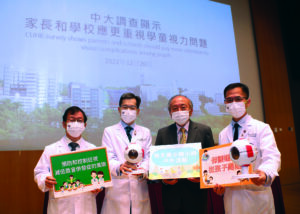
The Department of Educational Psychology of the Faculty of Education and the Department of Ophthalmology and Visual Sciences of the Faculty of Medicine, CUHK, jointly announce the result of a survey of pupils’ eyesight during the COVID-19 pandemic.
(From left) Professor Calvin C P Pang, Professor Clement C Y Tham, Professor Hau Kit-tai and Dr Jason C S Yam.
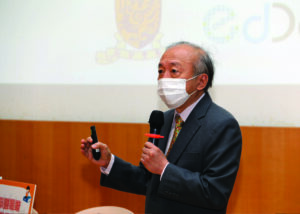
Professor Hau Kit-tai, Professor at CUHK’s Department of Educational Psychology, highlights the survey findings of pupils’ eyesight during the pandemic conducted by the CUHK EdDataX Research Centre.
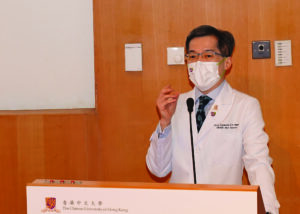
Professor Clement C Y Tham, Chairman and S H Ho Professor of Ophthalmology and Visual Sciences from the Department of Ophthalmology and Visual Sciences, CU Medicine, explains the reasons of myopia bloom among pupils in Hong Kong during the pandemic.
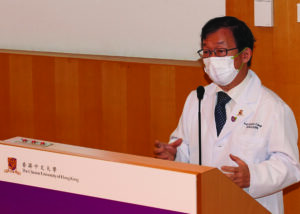
Professor Calvin C P Pang, S H Ho Research Professor of Visual Sciences from the Department of Ophthalmology and Visual Sciences, CU Medicine, says that myopia can lead to sight-threatening complications, including glaucoma, macular degeneration, retinal detachment and cataract.


